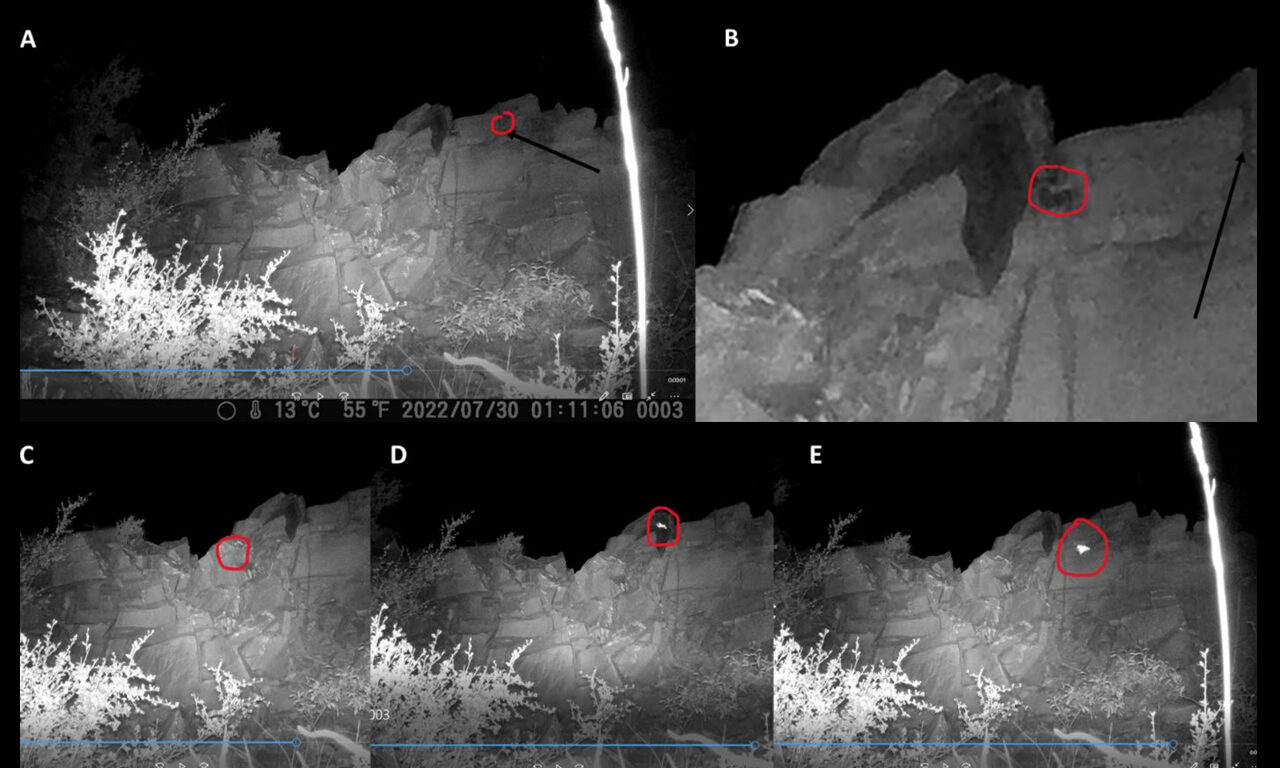Boulder County Parks & Open Space offers grants for research on county open space lands each year. All proposals are reviewed by a team of resource specialists, and awarded research projects are monitored during their activities on open space.
The following is a summary of a 2022 study conducted by Rick A. Adams at University of Northern Colorado. The project was a survey of bats at Hall Ranch, Heil Valley Ranch, Twin Lakes, and Walden Ponds Wildlife Habitat.
Abstract
In 2022, major emphasis was placed on a survey of Corona Hill at Hall Ranch. This area showed high bat activity and high propensity for bats roosting in quarried areas, especially the small-footed myotis (M. ciliolabrum) and the fringed myotis (M. thysanodes). In addition, the active prairie dog colony on site was the most active foraging area, however this was driven primarily by M. ciliolabrum which appears to have a unique relationship with prairie dog colonies. The M. thysanodes maternity colony located in Geer Canyon continued to be active and productive in 2022 despite the severely burned stands most proximate to their roost site. Plumely Canyon also was highly active with bats despite the severity of burn throughout the area. Ingersol Quarry was highly active in 2022 and continues to be an important drinking and foraging site, especially for myotis species, including M. ciliolabrum winter activity indicating over-wintering in rocks at the site. At the eastern property of Twin Lakes tricolored bats (P. subflavus) continued to increase, whereas at Walden Ponds, number of passes per night decreased from 2020 to 2021 but rebounded somewhat in 2022. The Left Hand Canyon elevational transect begun in 2021 and also showed high activity at middle and highest elevation near Brainard Lakes in fall 2022. High-elevation building sites, Rocky Mountain Mammoth, Cardinal Mill, and Blue Jay Mine showed continued high activity in 2022 and showed clear indication of large maternity colonies for little brown myotis (M. lucifugus) and long-legged myotis (M. volans).


